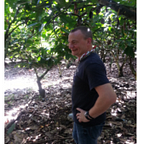I teach an introductory epidemiology class in the Global Disease Biology (GDB) major at UC Davis. GDB is a relatively new major but it has grown rapidly over the last 5 years. It’s rare among similar majors in taking disease as its focus and attempting to draw out principles from across human, animal and plant examples to give students a broad education on the causes and impacts of disease and approaches to prevention, management and mitigation.
Over the last couple of academic years we’ve offered the class twice per year (autumn and winter) to allow students flexibility in building their schedules and to accommodate demand. The winter quarter (January — March) class in 2020 was just coming to an end as the COVID-19 epidemic started to take off in the USA, so it wasn’t much affected by the Davis campus shutting down along with the rest of California.
As the state and national situation became steadily worse during the spring and early summer the decision not to teach autumn 2020 classes in person was made well in advance; the decision not to open the campus for the Winter quarter 2021 quickly followed. With no sign of a coherent national policy, and the case and fatality counts rising as the summer wore on, President Trump took a public swipe at universities, claiming that they indoctrinate students into dangerous anti-American, leftist thinking. I’ll come back to that in a bit.
Now, a full year and more since COVID-19 closed campuses in March 2020, I’ve taught epidemiology to about 200 more undergraduates in two sittings. In comparison with many other topics, epidemiology translates relatively well to online teaching. And so, without serious headaches about how to get the basic ideas across, I was able to spend more time looking at the overall experience for the students than might otherwise have been the case. Before one lecture early in fall quarter 2020 I asked the class how they were doing, in general; how was life?
The responses were enough to tell me that what they needed more than a precisely delivered, beautifully crafted course was support, encouragement, human interaction and a chance to be somewhere they felt cared for.
In the 9 hours a week I spent in the online bubble with the students my primary aim became to create an environment where they could participate at an intensity they chose for themselves each class time, and always know they would be treated with respect. It was all too obvious that the students were suffering additional stresses and strains in the absence in-person attendance. The teaching team tried to mitigate those problems as much as possible by being flexible about assessment submission dates, not setting an attendance requirement, and by doing the lectures live (something many of the students appreciated)and then making them available as recordings. In spite of the hardships that they were experiencing, none of the students wanted to return to in-person classes until it was absolutely safe; they lamented the situation they faced, but they understood the necessity to keep the campus closed. In short, unlike the executive branch of government (at that time) they understood that the public good of eliminating COVID-19 meant personal, individual sacrifices; they didn’t necessarily like it, but they understood the connection between their individual “freedom” and the social outcome that would benefit all of us.
I learned new lessons about what a vital part of teaching empathy is, and how much difference simple kindness can make, but the point I want to focus on here is how bizarre it was to teach epidemiology in the middle of the worst public health crisis in 100 years. The sense of the bizarre was intensified because a major part of the crisis was being caused by the incompetence and indifference of the federal administration; the same administration that had upped the anti-academia rhetoric only months earlier. Based only on the fact that the students understood the public goods aspect of the battle against the disease (and ignoring all the other creativity, perseverance and kindness they showed), I’m pretty sure that any randomly selected group of 12 of them would have made better policy decisions than the administration seemed to be making.
While all of this was unfolding, the President’s attack on academia kept coming back to me. As the lethally bad policies were enacted and 1600 Pennsylvania Ave, Washington, DC, emerged as an epicenter of the misinformation epidemic, it became increasingly difficult, and finally impossible, to continue to teach epidemiology from a politically neutral position. Bad policies, that went against epidemiological and public health principles were killing people and I wasn’t saying so, because a tyrant had scolded academia for being too political. But wasn’t my silence (well, not mine personally, my voice is insignificant) one of the ends that Mr Trump’s scolding was supposed to achieve? I was allowing a bully to scare me into adopting a position of false moral neutrality in exactly the arena where I should be passing on my sincerely-held and defensible position: that there is a true moral difference between a pro-social and a pro-individual approach when it comes to public policy on health. When it comes to fighting infectious and lethal invasive diseases, individualism doesn’t work, markets don’t deliver efficient or ethical solutions, and none of that can be debated in good faith.
It felt pretty good the first time I said that to the students. It still feels pretty good saying it here. Next time I teach the class I’ll repeat the point. I’ll keep repeating it, because it’s true and I don’t want to try and train a generation of epidemiologists who buy into the idea that what matters most is individual freedom when it comes to public health. I don’t like the thought of how much that would add to the sum total of human suffering. Some science is ethically and politically neutral, epidemiology often isn’t one of those areas.
